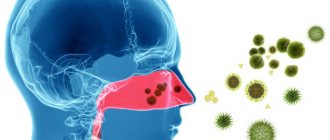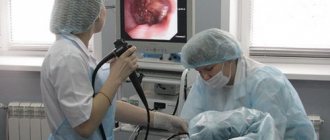Many people have experienced the uncomfortable feeling of a lump in the esophagus. In most cases, the cause is a stressful situation. After an emotional outburst, the person calms down and relaxes, and the compression of the larynx goes away on its own. But if this feeling does not arise due to stress, then this is a reason to consult a doctor.
Symptom Description
A lump in the throat, esophagus or stomach is a symptom that is characterized as discomfort in the chest, neck or upper abdomen, a feeling of constant or intermittent squeezing in these areas of the body, which is sometimes accompanied by a sore throat, difficulty swallowing or pain, belching or nausea.
The patient needs to clearly define several aspects. Firstly, is this symptom permanent or does it occur under certain conditions? Secondly, what determines the intensity of its manifestation and when it changes. Thirdly, is the sensation of a lump in the esophagus accompanied by other symptoms, complaints, disturbances in well-being, is there loss of appetite, vomiting, nausea, and weight loss.
Symptoms
When seeking medical help, the main complaint of patients is the feeling that something is stuck in the esophagus.
The conversation reveals other unpleasant symptoms:
- Changes in voice timbre, hoarseness or hoarseness.
- Episodic attacks of heartburn, complaints of burning in the epigastric region.
- The appearance of frequent belching of air, sour, bitter.
- Obsessive cough.
- Pain and discomfort when swallowing or when inhaling sharply.
- Difficulty swallowing food, indicating the presence of dysphagia.
- Pressing sensations behind the sternum, causing fear of suffocation.
Such patients often swallow saliva or drink a lot of liquid, hoping to push through what is stuck and get rid of the lump feeling. Another manifestation is reflex coughing. A person's night rest is disrupted due to fear of suffocation in his sleep. Irritability and nervousness appear due to the feeling that food is standing up or something is stuck in the esophagus.
Such symptoms are not present all at once and appear periodically:
- for a specific body position;
- when overusing certain products;
- in stressful situations;
- after physical activity associated with bending;
- with overwork, lack of sleep and fresh air.
Even pathologies not related to the digestive tract can be disguised as unpleasant sensations in the esophagus. The impression that there is food in the esophagus can be caused by a pressing feeling behind the sternum or inflammatory processes in neighboring organs.
Bronchial pathologies
The following pathologies can provoke pain and sensations of a lump in the chest, heaviness, as well as impaired breathing:
- bronchial asthma;
- infectious pneumonia or traumatic type;
- benign tumor or cancer cells;
- pleurisy, accompanied by the formation of purulent or serous fluid.
Developing pathologies disrupt the functions of the respiratory system, the lungs cease to function properly. Against this background, characteristic symptoms appear. Patients feel pain in the chest and a lump in this area, and breathing becomes difficult.
With the development of bilateral pneumonia, the patient's condition is more complicated. The disease is accompanied by a large area of damage to the lungs and a decrease in their volume. In addition, there is pressure on the stomach and nearby organs. This causes the patient to feel a lump in the chest and throat.
Pleurisy is characterized by the accumulation of fluid, which increases pressure on the heart and blood vessels. Due to impaired blood circulation, the symptoms of the disease will increase. Concomitant angina increases the risk of deterioration of the patient's condition. Consultation with a qualified specialist and comprehensive treatment are required.
Approach to review
The symptom described above should be considered from many points of view, initially implying that it is precisely a criterion of a somatic disease, and not a mental state. Only by excluding serious diseases of the cardiovascular, endocrine, digestive and nervous systems is the presence of neurosis confirmed.
Before making an unambiguous, reliable conclusion about the absence of somatic pathologies, a thorough examination of the patient is required, regardless of age. A competent assessment of all symptoms, examination of regional lymph nodes, fluorography, clinical blood tests, FEGDS, ultrasound of the heart and thyroid gland are required. Each patient, turning to a specialist with a similar symptom, should be prepared for the need for such an examination.
Formation of a diaphragmatic hernia
The disease has no external signs and is accompanied by severe symptoms similar to heart pathologies. Hiatal hernia (HH) is a common disease characterized by its enlargement. Violations lead to the fact that a person is faced with a feeling of a lump in the chest.
This is due to the exit of some part of the stomach through the opening of the diaphragm. The same applies to the abdominal segment of the esophagus. Under normal conditions, these organs should be located in the abdominal cavity. Pathologies lead to their penetration into the chest, where they compress the lungs and heart.
A person does not show any obvious external signs, but there are characteristic symptoms that will help you suspect problems and contact a qualified specialist:
- There is a feeling of a lump in the esophagus and severe shortness of breath after eating food. A full stomach puts pressure on the lungs and diaphragm.
- The patient feels nausea and vomiting after eating. This is also explained by a full stomach, which puts pressure on the walls of the diaphragm.
- Reflux esophagitis. The disease is characterized by the entry of gastrointestinal contents into the esophagus. This causes the development of the inflammatory process. The patient is worried not only about the lump in the esophagus, but also about the accompanying symptoms, including heartburn, hiccups, and pain.
- Heart rate increases. In the area of the heart, a person notices the appearance of stabbing pains.
The development of pathological processes can be determined by undergoing special studies. Doctors prescribe x-rays to their patients using contrast agents.
Diagnostic measures allow you to see the borders of the stomach and esophagus in the image. Treatment will require drug therapy prescribed exclusively by a doctor. Additionally, the patient will need to attend therapeutic exercises and physiotherapeutic procedures. Sometimes a diaphragmatic hernia can cause serious complications that require surgery.
Diseases of the ENT organs
Due to the topographic proximity of the ENT organs and the esophagus, tonsillitis (acute or chronic), pharyngitis, laryngitis can provoke the appearance of a feeling of a lump in the esophagus. In most cases, these diseases occur as a result of infectious “agents” entering the body. Occurs against a background of elevated body temperature and deterioration of general condition. Depending on the location of the lesion, hoarseness, sore throat, and enlarged regional lymph nodes may be observed.
In addition to inflammatory diseases, the feeling of a lump can also be caused by a neoplasm . An otolaryngologist will be able to identify the true cause after a full examination.
Symptoms of GERD
https://www.youtube.com/watch?v=QCvs1a5F4Gg{amp}amp;modestbranding=0{amp}amp;controls=1{amp}amp;rel=0{amp}amp;showinfo=1{amp} amp;enablejsapi=1{amp}amp;origin=
One of the common causes of coma in the esophagus is gastroesophageal reflux disease. The mechanism of its occurrence is insufficiency of the cardiac sphincter, which allows for incomplete differentiation of the stomach and esophagus. The result of this is the frequent reflux of acidic stomach contents into the esophagus, the epithelium of which is not adapted to such influences. In its lower third, a focus of inflammation forms and a number of symptoms appear.
The first complaint of patients with mild GERD is a feeling of a lump in the esophagus and belching, sometimes accompanied by heartburn after eating. It is quite easy for the patient to associate the occurrence of such complaints with food intake. As a rule, they develop immediately or in the first 30 minutes after eating and are not accompanied by pain.
A stereotypical symptom of patients with more severe GERD and its complications is frequent heartburn and belching of air. Vomiting is rare, it is not accompanied by nausea and, as a rule, stops immediately after removing the meager portion of food eaten the day before. More often there is a sour taste in the mouth during the day and a bitter feeling on the tongue after sleep.
Such patients are recommended to eat 7-8 times a day in small portions and maintain an upright body position for at least 1 hour after meals, and give up alcohol and smoking. Patients with GERD often suffer from unmotivated dyspepsia, which makes the consequences of alcohol consumption more difficult to bear.
Due to discomfort, a feeling of heaviness in the abdomen or esophagus, as well as the effect of acidic contents on the esophagus, especially in small quantities, periodic hiccups and belching of air, this condition can be combined and interpreted by the patient as a lump in the stomach, esophagus or pharynx. Unlike a similar symptom caused by neurosis or psychological stress, in this case swallowing is free, although appetite may be lost.
Manifestations
The feeling of a lump in the esophagus or throat is also accompanied by additional symptoms. Patients especially note the following:
- Sensation of a foreign body in the esophagus that interferes with swallowing food or liquid.
- Substernal breathing.
- A state of suffocation, lack of oxygen, desire to take a deeper breath.
- Pain when talking or taking a deep breath.
- Fear of choking on water or food.
- Desire to cough or swallow a lump.
- Belching with air, unpleasant taste in the mouth.
These symptoms are not always constant; their nature can be variable. Thus, belching occurs periodically in patients. Some doctors associate the appearance of this symptom with heartburn.
Important: Heartburn is a symptom in which the acidic contents of the stomach are thrown into the esophagus and leads to a burning sensation in the chest area. Frequent heartburn can injure a person's esophagus. It leads to symptoms such as belching, nausea, pain in the esophagus and a sour taste in the mouth. Long-term, long-term existence of heartburn can lead to esophageal cancer.
Manifestations of a coma in the esophagus can make themselves felt under certain conditions:
- A certain position of the patient's body.
- Eating certain, often rough foods.
- Nervous tension, stress, fear.
- Lack of sleep and fatigue, overwork.
- Strong emotions of any nature.
Therapeutic methods
The sensation of a lump in the stomach that lasts for a short period of time is not dangerous to human health. If tachycardia or painful sensations are constantly disturbing without a specific reason, consultation with a qualified specialist is necessary. But there are signs indicating the development of a serious pathology. When pain and discomfort do not stop, you must call an ambulance.
A person requires medical attention if:
- Heaviness in the heart area is constantly present, even when the patient is calm.
- The painful sensations intensify, especially if the patient tries to breathe.
- There is a shooting pain syndrome in the chest area.
- The patient complains of a too rapid pulse, he has a feeling that his heart is breaking.
- A lump in the throat is accompanied by a lack of air and shortness of breath.
- A person cannot straighten his back because his chest hurts so much.
Consultation with a qualified specialist is necessary. He will conduct an examination, prescribe additional tests and studies, and diagnostic procedures. Based on the results, he will select effective treatment and give useful recommendations. Depending on the individual case, drug therapy can be long-term in a hospital or at home.
If it is cancer, surgery is necessary to remove the cancer cells. As the tumor increases, it is accompanied by the feeling of a lump in the stomach.
If the cause of discomfort is high acidity, the doctor will prescribe special medications that will help reduce its concentration. If the heart function is impaired, you will need the help of a cardiologist. He will examine the patient and prescribe appropriate medications that will help restore the functioning of the cardiovascular system.
It is not recommended to make a diagnosis and carry out therapy on your own. You can worsen your health condition, cause complications and consequences. Only a doctor will determine the main sources of coma in the stomach, the causes of disorders and prescribe all the necessary medications.
Causes of formation of a lump in the stomach
Food undergoes initial processing in the mouth. It is chewed, and special glands secrete saliva for wetting. Taste buds determine how much they like a food and send a signal to the stomach to start producing gastric juices. The esophagus transports the prepared portion of food to the stomach.
Poorly chopped and dry food, very cold and hot, spicy food does not move well through the esophagus and there is a feeling of a lump in the sternum, a burning sensation. The reasons are poorly prepared or rough food. It scratches the walls, irritates the mucous membrane of the esophagus and in the area of the sphincter - valve, gets stuck, accumulates and gathers into a lump.
When such food passes further, it takes a long time to process, does not move well through the organ and causes a feeling of a lump in the stomach. With frequent attacks, the cause is most often gastritis or ulcers, low acidity and insufficient enzyme secretion. Food does not decompose, moves poorly and accumulates, causing heaviness and a feeling of a lump. When the sensation of a lump appears in the stomach 2–4 times a year, the patient himself can easily determine the cause of the discomfort:
- Binge eating.
- Heavy, fatty and spicy foods.
- Eating in an awkward position, bending over, squeezing the stomach.
- Drank a lot of liquid.
- Taking a lot of medications.
- Dry food and food on the go.
- Pregnancy.
- Stress.
A person himself performs actions that subsequently lead to discomfort. The reasons for the formation of a coma in the stomach are easily determined.
The stomach has a limited volume. Food moves along it, undergoing preliminary processing at the top and splitting in the middle part. The lower part, the antrum, prepares the remaining mass for its passage into the intestine. A large number of products fill the entire organ cavity. Its normal operation is disrupted. Food accumulates below, not broken down by gastric acid and bile. It begins to ferment and release gases. Excess contents return to the esophagus, irritating it with acid. There is a feeling of a large lump in the stomach.
A feeling of a lump occurs if you eat a little, but the products require a long processing process, since they contain large amounts of fats, proteins, and coarse fiber. Food lingers in the stomach and accumulates in the lower part. Additionally, gastric juice is secreted. There is a feeling of heaviness and overcrowding.
Gastric causes
You should also consider gastric causes of coma in the esophagus, which are no less likely than esophageal causes to cause this symptom. Pathologies such as gastric ulcers, pyloric stenosis, tumors or duodenogastric reflux disease are observed very often. Banal gastritis can cause frequent belching and a feeling of discomfort in the esophagus.
Often the cause of this symptom is the presence of a tumor in the digestive system. Then, in addition to the feeling of a coma in the stomach or esophagus, the patient is worried about weight loss, frequent nausea with vomiting after eating, hiccups, and unmotivated discomfort in the chest after meals.
To identify the immediate cause of a coma in the stomach, throat or esophagus, it is necessary to undergo an examination. It consists of general clinical tests, examination of the lymph nodes of the body, X-rays of the chest organs, FEGDS. Once a specific disease has been identified, treatment should begin.
Treatment before a specific diagnosis is made is also advisable, but it will be non-core in nature and consist of PP inhibitors (Lansozol, Pantoprazole) or histamine receptor blockers (Ranitidine, Famotidine). Taking them allows you to weaken the effect of the acidic environment of the stomach on the affected tissue of an ulcer or tumor, reducing the risk of bleeding.
Osteochondrosis and discomfort in the esophagus
Lump in the esophagus due to a problem with the thyroid gland
The not entirely clear connection between a spinal pathology such as cervical osteochondrosis and a lump in the esophagus can be explained by the fact that compression of the nerve roots by overgrown osteophytes on the vertebrae can occur throughout the entire periphery of the human body. The cervical spine bears a considerable load; it is one of the most vulnerable due to the constant mobility of its vertebrae.
Read: Blood from the mouth: probable causes and what to do about it
Lack of physical activity with a sedentary lifestyle, spending a long time in static positions, exceeding the optimal body weight can lead to the fact that osteochondrosis manifests itself even in adolescence. The nerve endings of the cervical spine, damaged by osteochondrosis, cannot fully innervate the chest area, which leads to the sensation of a lump in the esophagus.
This pathology is accompanied by headaches, limitation of movements and pain when turning the head, moving the arms, or bending the neck. A neurologist or vertebrologist will help establish the correct diagnosis and prescribe treatment.
Preventative treatment
Preventing a disease is always easier than fighting it or its complications. To avoid pathology of the cardiovascular system, it is enough to adhere to a healthy lifestyle. Stop abusing bad habits, including tobacco products and alcoholic beverages. Walk more in the fresh air, do not get carried away with heavy physical activity.
To prevent a lump in the stomach, it is necessary to follow a diet, surround yourself with positive emotions, and avoid disturbances of psychological discomfort.
If the cause of problems in the chest is diseases of the spine, you need to ride a bike more often, take walks, and use exercise equipment. This is good prevention not only for the heart and vascular system, but also for the musculoskeletal system.
In order for the human body to be healthy, it is necessary to increase its defenses. In addition to the fact that you will have to eliminate bad habits, you will need to replenish your reserves of vitamins, microelements, and nutrients. To do this, it is recommended to dilute the diet with vegetables and fruits. If you follow all medical recommendations and rules, you can avoid the development of numerous pathologies, especially those that cause a feeling of a lump in the stomach.
It is important to determine the development of pathological processes in the initial stages in order to get rid of the disease in a timely manner. Otherwise, without the help of a specialist, the symptoms will only get worse.
Dysphagia
Dysphagia is a disorder or difficulty in swallowing food, associated either with impaired innervation of the muscles of the pharynx, or with the presence of a tumor in the upper digestive tract. These groups of diseases can cause a feeling of a lump in the esophagus when trying to swallow food, as well as distension and discomfort in the chest.
In cases of significant obstruction of the lumen of the esophagus by a tumor, the ability to swallow food may be completely lost. Then, as a result of swallowing, food comes into contact with the narrowing of the esophagus or pharynx, causing nausea and vomiting. Vomiting of unchanged food that occurs immediately at the moment of swallowing is called esophageal. Its cause is the presence of a tumor in the esophagus or pharynx, mediastinum. Rarely, similar symptoms are caused by an aortic aneurysm.
In the paralytic form of oropharyngeal dysphagia caused by cerebral infarction or the consequences of traumatic brain injury, a constant feeling of a lump in the esophagus may be observed, associated with incomplete passage of food into the stomach. Solid components of ingested food are constantly retained in the pharynx or esophagus, causing mechanical irritation in the chest and neck, sometimes accompanied by nausea.
After meal
An alarming manifestation is an esophageal lump that begins to bother you after eating. Such symptoms sometimes indicate serious pathological abnormalities, although they sometimes occur in relatively healthy patients.
Most often, this problem is detected in patients with gastroenterological pathologies, although the reasons may be hidden in completely different factors.
The appearance of an uncomfortable lump in the throat during the process of eating food usually does not appear as the only symptom. Often, in combination with similar sensations, patients experience complaints of a distinct soreness and pain in the pharynx or chest area, attacks of suffocation, etc.
To identify the root cause, a competent and comprehensive examination by a qualified specialist is necessary.
The main causes of the symptom
As a result of constant exposure to stress, symptoms often appear that are caused by a person’s mental state and are not related to organic pathology. One such symptom is a lump in the esophagus. In this case, when the mental state normalizes, the symptom disappears. For this purpose, sedative therapy is prescribed:
- prescription of sedative medications - extract of valerian, motherwort, peony; decoction of chamomile, mint. If herbal remedies do not help, tranquilizers are prescribed - Grandaxin, Relanium, Mezapam;
- vitamin therapy - preparations containing B vitamins and magnesium;
- physiotherapy - electrosleep, hydromassage bath, darsonvalization, Charcot shower;
- massage and physical therapy;
- consultation with a psychologist or psychotherapist.
As a rule, with treatment, the symptom stops quite quickly. Recovery occurs within the second week after the start of therapy.
When vertebral tissue grows as a result of the progression of the degenerative process, a lump may be felt in the esophagus. If the cause of the symptom is osteochondrosis, then the sensation of a lump in the esophagus is accompanied by headaches, dizziness, limited movement in the cervical spine and other symptoms characteristic of osteochondrosis.
In this case, treatment of exacerbation of the underlying disease is indicated: the prescription of non-steroidal anti-inflammatory drugs, B vitamins, muscle relaxants, physiotherapy, massage, physical therapy.
The enlarged gland presses on the esophagus, resulting in the symptom of a lump in the esophagus.
Especially if the lump is strongly felt when swallowing food or water. As a rule, the course of thyroid diseases occurs in a chronic form with periodic exacerbations.
Therefore, the symptom of a coma in the esophagus may appear along with an exacerbation of the underlying disease. To confirm the diagnosis, an endocrinologist will prescribe an ultrasound examination of the thyroid gland and a blood test for hormone levels.
Cardiac pathology sometimes gives a symptom of a sensation of a lump in the esophagus. These are mainly heart diseases associated with ischemia. Very often, angina pectoris produces symptoms such as pressing pain in the chest, burning, pain, and a feeling of a lump in the esophagus.
If all of the above symptoms are present, you must consult a cardiologist who will prescribe diagnostic procedures (ECG, ultrasound of the heart, cardiac monitoring, necessary clinical and biochemical tests). Treatment is prescribed depending on the examination results.
This pathology is characterized by the appearance of a sensation of a lump in the esophagus. The clinical picture also includes heartburn, belching of air and acidic stomach contents, pain behind the sternum, and a feeling of fullness. These symptoms worsen after eating.
Eat food in small portions up to 5-6 times a day, in a warm pureed form. Surgical treatment is used only when the desired effect of drug treatment is absent.
The disease occurs in acute and chronic forms. Characterized by damage to the esophageal mucosa. The disease can be caused by infectious causes, chemical and thermal burns of varying degrees, allergic reactions to food and certain medications. If esophagitis is caused by regurgitation of acidic contents or bile, then it is isolated as a separate disease. Manifestations of the disease depend on the degree of damage to the mucous membrane.
In the catarrhal form, symptoms practically do not manifest themselves and a person may not feel them. In more severe cases of the disease, severe burning pain behind the sternum may appear, which is accompanied by impaired swallowing of saliva and food bolus. Treatment of complex forms of esophagitis, especially if the disease is caused by burns, is carried out in a hospital. The mild, asymptomatic form is treated on an outpatient basis.
Reflux esophagitis
This is exactly the case when the inflammatory process in the esophagus is caused by the irritating effect of the acidic contents of the stomach and bile on the mucous membrane of the esophagus. The disease is extremely unpleasant: pain behind the sternum, difficulty swallowing, sensations of a lump in the throat, coughing attacks, general asthenic symptoms.
Early diagnosis is extremely important here. The symptom of a coma in the esophagus can occur in this case as a result of compression of the esophagus by a tumor. Treatment in this case is carried out by an oncologist.
The disease can also cause the sensation of a lump in the esophageal tube. As a rule, it occurs with pinched nerves, which causes unpleasant pain behind the sternum and, sometimes, difficulty swallowing. Neuralgia requires intensive treatment. A neurologist prescribes analgesics, B vitamins, and physical therapy.
Severe injuries to the chest are almost always accompanied by damage to internal organs. Symptoms of traumatic exposure can be very diverse - unpleasant sensations behind the sternum, pressing burning pain, disruption of the passage of the food bolus through the esophagus, difficulty swallowing. Treatment is aimed at restoring the functions of the mediastinal organs.
To summarize the above, I would like to draw attention to the importance of the symptom, which is manifested by the sensation of a lump in the esophagus.
In any case, this symptom cannot be ignored, since in some situations, such as cancer, every minute is priceless. When a patient comes to the clinic with a similar problem, the doctor must first rule out a tumor of the esophagus, then turn his attention to the cardiovascular system and gastrointestinal tract. If organic lesions of internal organs are not revealed during the examination, the patient should be sent for consultation to a psychotherapist.
Dyspepsia
Dyspepsia is an episodic disturbance of normal digestion and motility of the gastrointestinal tract. It manifests itself with nausea, sometimes vomiting and loose stools, often causing a feeling of a lump in the esophagus and belching. Dyspepsia is associated with a violation of the standard diet and is more often observed in patients who already have some kind of disease of the digestive system.
Dyspepsia with gastritis is observed when eating fatty foods or when overeating, smoking, or drinking alcohol. As a rule, feeling the appearance of the above-described symptom of a coma in the throat, esophagus or stomach, the patient does not yet know what disease or condition caused it. Therefore, when such complaints are identified, it makes sense to conduct a diagnosis regardless of age to exclude tumor diseases and ulcers.
Detection of gastritis with FEGDS is the best outcome, which requires only proper nutrition, quitting smoking and alcohol. However, especially when GERD or duodenogastric reflux disease is detected, FEGDS should be performed annually for follow-up. This is necessary to take biopsy samples and examine them for the appearance of tumor cells.
Over the past 10 years, this practice has become widespread in the CIS, having already proven its effectiveness. In Japan, over the past 30 years, the routine performance of FEGDS for complaints of dyspepsia, nausea, or a feeling of a lump in the esophagus after eating has saved hundreds of thousands of lives due to the early detection of tumor diseases before the metastasis stage.
Thyroid
The thyroid gland is located on the anterior surface of the cartilage of the same name. With its pathologies associated with an increase in the size of the organ or the formation of nodes, the appearance of specific symptoms is noted, one of which is a lump in the esophagus. Treatment of thyroid pathologies, of course, is not based only on this complaint; in addition, in order to cause such pronounced symptoms, the increase must be noticeable externally. However, due to the fact that these pathologies are often missed by patients, they should be considered in detail.
An increase in the size of the thyroid gland can be total or nodular in nature. In the first case, the entire gland increases in size, which is observed in endemic goiter or hypothyroidism. Nodular growth of the gland is observed more often, although less often it manifests itself symptomatically. The nodules are usually small in size, however, if they are located on the back surface of the organ, they can irritate the larynx.
Diagnosis of diseases
The mediastinum is the anatomical region of the chest, which contains the esophagus, ascending aorta, lymphatic vessels and nodes, roots of the lung, trachea, intrathoracic vessels, nerves and regional fatty tissue. This is a place where the organs of the cardiovascular, nervous, digestive, respiratory and lymphatic systems are closely located.
Among the most common diseases of the mediastinal organs are tumors of the main bronchi and lungs, as well as enlarged lymph nodes. Aortic aneurysm is observed very rarely, although its contribution to the formation of the symptom is often very significant. In the case of the appearance of tumors or enlarged lymph nodes, mechanical compression of the esophagus is observed, which causes choking and discomfort when swallowing, difficulty passing food, nausea and sometimes vomiting.
Damage to the lymph nodes occurs in diseases of the blood system (leukemia, hematosarcoma, lymphogranulomatosis, lymphoma), metastasis of tumors of the lung or main bronchi, breast, esophagus or stomach, as well as in tuberculosis and sarcoidosis. Each of these diseases requires diagnosis and quality treatment in accordance with specialized protocols.
A lump in the throat is not always so harmless; in most cases, it is a serious symptom indicating serious problems with a person’s health.
To make the diagnosis more accurate, the doctor may prescribe:
- general blood and urine tests;
- taking a biochemistry test;
- Ultrasound of the thyroid gland;
- hormone analysis (if a tumor or throat abscess is suspected);
- visual examination of the oral cavity, vocal cords, larynx, neck lymph nodes;
- X-ray of the cervical spine.
It is mandatory to be examined by an ENT doctor and an endocrinologist. If the larynx is normal, without deviations, a feeling of coma may appear due to nervousness, you should consult a neurologist. Esophageal congestion may be due to oncological reasons. Even a small tumor can compress the walls of the throat, leading to a lump in the throat, heartburn, and difficulty swallowing. As the tumor grows, pressure begins to put on the heart; early stage cancer is possible; a full examination is necessary.
When the walls of the sternum are physically injured, soft tissues are compressed, the ribs are deformed, a lump props up against the throat, a bruise of the sternum is fraught with hemorrhage into the chest cavity, and respiratory arrest. If at the same time there is compression of the esophagus, then swallowing is difficult, the skin in the sternum area becomes bluish, an ambulance should be called immediately.
As first aid you need to apply to the sore spot:
- apply a bandage that will reduce the feeling of pain;
- apply a cold compress to reduce the bleeding area;
- give the patient an anesthetic in the form of spasgan, analgin, baralgin;
- provide the patient with complete rest and immobility.
Psychological cause of the symptom
When a symptom such as a lump in the esophagus appears, the causes, treatment and grounds for a thorough diagnosis of which are explained above, one cannot ignore any manifestations of diseases of the digestive, endocrine, lymphatic, cardiovascular and respiratory systems. And often modern research methods cannot identify a disease that can cause such a complaint. In this case, when serious diseases have been excluded, it makes sense to look for the cause of the lump in the throat in the patient’s psyche.
Chronic social stress, disturbances in the patient's adaptation to work and life conditions, as well as the loss of loved ones, failures in relationships or business - all this can, due to autonomic reactions, cause discomfort in the esophagus. The so-called lump in the throat, which comes in moments of strong disgust, resentment, irritation, when a person, feeling powerless, wants to burst into tears and give up, should be discussed with a psychologist. But this must be done either after excluding serious somatic diseases, or simultaneously with their diagnosis.
Hormonal cause of discomfort in the esophagus
If a coma occurs in the esophagus, the cause may be the presence of a goiter. The disease occurs due to a lack of iodine and a compensatory increase in thyroid tissue. Topographically, the esophagus is located directly in the center of the thyroid gland, adjacent to it and dividing into two lobes.
An increase in tissue leads to compression of the esophageal tube, narrowing of the lumen and the feeling that something is interfering with swallowing and throwing back the head. There are other signs:
- difficulty inhaling when tilting your head back;
- increased irritability, fatigue, drowsiness appears;
- increased hair loss is observed;
- there are sharp fluctuations in weight.
If you have such symptoms, you should urgently consult an endocrinologist.








